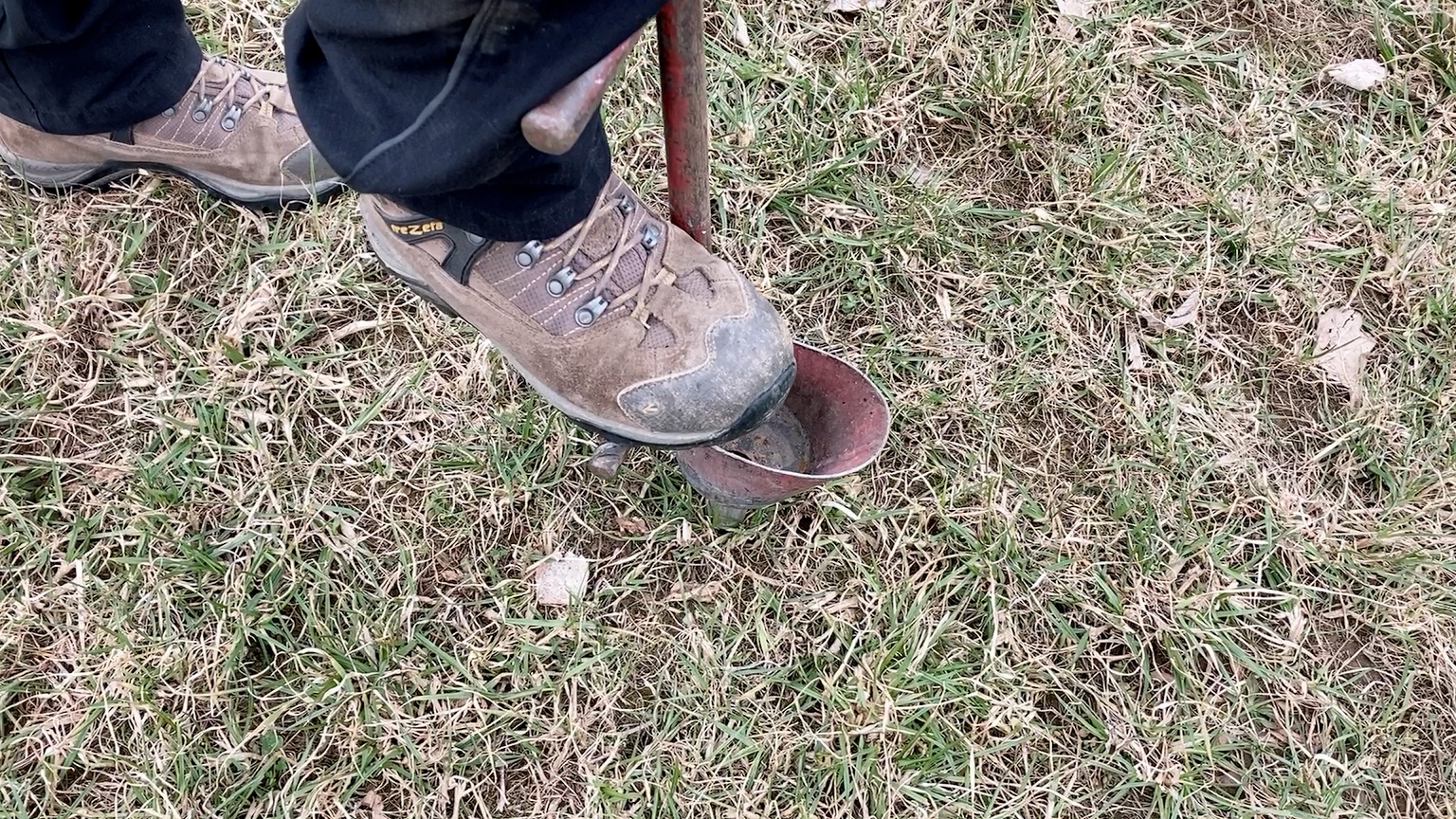To do this, a stainless steel cylinder with a defined size and volume (100 cm³ or 250 cm³) is carefully driven into the ground. With the help of a suitable impact hood and a medium-sized hammer, the piercing cylinder is driven into the ground without tilting, if possible. When the specified soil depth is reached, the piercing cylinder is carefully dug out with a knife or spade. The piercing ring surface is then cut smooth without smearing the pores. The sampling cylinder is closed on both sides with a plastic lid and is therefore ready for transport to the laboratory for physical analysis.
Sampling with the bowl drill
The so-called bowl auger is well suited for taking samples to determine soil chemical parameters, as it enables rapid and precise sampling. The sampling depth in grassland is 0 – 10 cm. For a representative sample, at least 25 individual samples should be taken, which are further collected in a clean container and mixed well. Stones and plant remains are removed and a representative portion is placed in a clearly visible and legibly labeled soil sample box.






